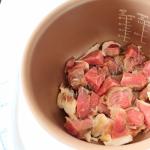The snowdrop is the first to come to life after the long winter cold. First, green leaves appear on it, and then a white bud, similar to a bell with a drooping head. This flower is not afraid of either snow or frost. The appearance of snowdrops in the garden heralds the imminent arrival of spring. Photos of snowdrop flowers can be found in our gallery.
Description of the flower
In scientific literature the plant is called galanthus. Snowdrop is a perennial herb and belongs to the Amaryllis family. It is distributed in the following areas:
- Crimea;
- Southern Europe;
- Asia Minor;
- Caucasus.
No one can accurately name the existing number of snowdrop varieties. This low herbaceous plant has two linear leaves that reach 20 cm in length. These leaves come out immediately along with the flower stalks. A single bell is surrounded by a white perianth, which consists of 6 leaves. The three petals are outer and elliptical in shape. The three inner leaves are wedge-shaped and have a green spot at the top. Although the flower has a pleasant smell, it is very faint.
The plant has round fruits in the shape of a box with 3 compartments, in which it is located a small amount of black seeds. The seeds have a succulent appendage that attracts ants. The ants take them away and thereby multiply the flower.
The snowdrop bulb has conical or egg-shaped , which has a compact group of modified leaves emerging from one common ground. Snowdrop flower photo:
Landing
Most the right time The period for planting snowdrops is from July to September. If the autumn is warm for a long time, then planting can be extended until November. Currently, snowdrops are being sold already in bloom, which is not correct. After the flower is planted in the ground, all the leaves will wither and fall off, and then die completely. This bulb becomes very weak. On next year the plant may bloom weakly or will not bloom at all and will die.
The plant bulb does not like to dry out. Therefore, you should not keep them in the air for more than a month. If it is not possible to plant the bulb, you can sprinkle it with shavings and sawdust and place it in a bag. When planting, the snowdrop bulb is placed in the soil to a depth equal to two bulbs, if the soil is loose. And to a depth equal to one bulb if the soil is heavy. In both cases, the bulb cannot be deepened by more than 5 centimeters. Photo:
The flower has the ability to determine for itself the depth to which the root system will be distributed. If the bulb is planted deeply, it will form another bulb on the peduncle, which will grow at the required depth.
Growing
The plant loves dark, but sun-warmed places and good drainage. For wild species, when planting, you need to choose the most illuminated place. This type of snowdrop is winter-hardy. Autumn flower can be cover with a layer of loose compost.
This plant must be fertilized with extreme caution. The flower does not like fresh manure. It is best to fertilize the flower with mineral fertilizers.
Kinds
As mentioned earlier, the amaryllis family includes 18 types of snowdrops. The most famous are:

Some varieties of snowdrop have been included in the Red Book, since the collection of flowers is uncontrolled. It becomes more and more difficult to find snowdrops in the wild every year.
In nature there is a coppice flower, which also appears during the first thawed patches; it is very similar to a snowdrop, only blue. It is also called blue or blue snowdrop, but in fact it is completely different plants.
Care
 This flower is grown as in open ground, and at home in a pot. Of all bulbous plant It blooms very first and already produces buds in the middle of winter. To do this, the flower must be taken out of the room.
This flower is grown as in open ground, and at home in a pot. Of all bulbous plant It blooms very first and already produces buds in the middle of winter. To do this, the flower must be taken out of the room.
IN warm room the plant may die. Because the flower is cold-loving, hardy and can withstand temperatures up to ten degrees cold. During the flowering period, the plant must be moved to a cool place.
After planting the bulb for 2 months, the plant is needed keep in dark place . And then move it to daylight, but avoid direct sunlight.
The optimal temperature in the dark for a plant is zero degrees, and during flowering the maximum is 10 degrees above zero, otherwise the plant may die. When planting a bulb, the soil should be well moistened, and then not watered until the pot is moved to the light. Next, you will need to water the flower twice a week.
snowdrop flower
















Snowdrop is one of the most beautiful spring primroses. The first snowdrop flowers begin to sprout even under deep snowdrifts, which is where its name comes from. What’s incredible is that this delicate plant is not afraid of the frosty ground and boldly reaches out to sunlight. The appearance of this early flower symbolizes the long-awaited arrival of spring and the onset of warm days. We can say that the plant itself is rushing spring to quickly take over.
There are about 18 varieties of spring flowers. Many of them are considered rare flowers and are listed in the Red Book. Despite the wide variety of species of these plants, The main popular types are:
However, strict measures to distribute these primroses do not frighten dishonest people. The thirst for profit forces them to pick the first spring flowers every year, despite all the prohibitions and fines.
In order for a bouquet of spring flowers to last only a few days in the house, people carelessly pick them, often damaging the bulb. It is still worth remembering that this plant is an endangered species of flower. It should not be picked and collected in the forest.
Growing in greenhouses
Still, you shouldn’t be upset that you can’t pick forest primroses. You can please yourself and your loved ones with flowers that are grown specially for the spring holidays in greenhouses. The owner of the greenhouse must present a certificate that allows him to grow and sell the snowdrop flower without causing damage to nature.
The common snowdrop is most suitable for growing at home. It will certainly delight you with its flowering after long gray winter days.
In Russian tradition, all first spring flowers are usually called snowdrops. Although from a botanical point of view, only Galanthus is considered a true snowdrop, in different regions of our country the most various plants from completely different botanical families.
Snowdrops in Russia are most often called anemones, or anemones (Anemone), liverworts (Hepatica), lumbago (Pulsatilla), scillas (Scilla), cyclamens (Cyclamen) and hellebores (Helleborus). Almost all of these plants are protected by law, as they are often the subject of mass harvest for commercial purposes, and in addition, they are greatly affected by climate change and forest loss.
Scillas
In the forests of the European part of Russia, you can most often find two types of woodles: Siberian and two-leaved. Siberian is the “blue snowdrop” familiar to many. It is very unpretentious and reproduces well by children and seeds, which are carried around by ants. As a result, this plant forms magnificent blue carpets.
Scilla bifolia has several small flowers with beautiful stamens on the peduncle. In gardens it is less common, but in mass it is no less impressive.
Snowdrop or galanthus (lat. Galanthus) is a genus of perennial herbaceous plants Amaryllidaceae family (Amaryllidaceae). The botanical name comes from the Greek words "gala" and "anthos", which together mean "milk flower".
Description
Representatives of the genus belong to ephemeroids, i.e. are characterized by an extremely short growing season, and the rest of the annual cycle is spent in the form of a dormant underground part.
Snowdrops
The bulb, 2–3 cm in size, consists of thick scales that form annually: two from the lower leaf, one from the base of the assimilating leaves. The scales are planted on the bottom, and small thread-like roots grow from it. Daughter bulbs are formed in the axils of the mother bulb. Two (rarely three) linear or lanceolate, smooth or folded, with a bluish coating or green leaves form a ground tuft that grows from the neck of the bulb simultaneously with the buds. During the flowering period, the leaves are slightly shorter or equal in height to the peduncle, and after flowering they grow.
A rounded or flattened arrow is crowned with a bract leaf and a single drooping bell-shaped flower. The perianth has six leaflets: three outer ones - they are larger (15-30 mm), usually elliptical; the three inner ones are short, obversely wedge-shaped, with a characteristic green spot at the apex. This spot consists of separate stripes, the number of which is different types changes the overall size and shape of the spot. The fruits are tricuspid capsules in which a few black snowdrop seeds ripen.

Snowdrop structure
There are 18 species and 2 hybrids of natural origin described in the genus. The most decorative and popular in culture are:
P. alpine(G. alpinus) = P. Caucasian (G. Caucasicus) - a species that grows naturally in the Caucasus. During the flowering period, the gray leaves are up to 7 cm long, and then grow to 30 cm. Peduncles up to 10 cm high are crowned with a white flower with a green spot up to 2.5 cm. Flowering lasts 2 weeks in April.
P. Elveza(G. elwesii) - tall (up to 25 cm), very decorative look with wide bluish leaves and large spherical flowers. About 15 forms are cultivated in horticulture.
P. white(G. nivalis) - the most common species in culture in the temperate climate zone, having about 50 garden forms. The earliest honey plant, at the end of March it already begins to bloom. This is a low (up to 12 cm) species with bluish lanceolate leaves up to 10 cm long and very elegant flowers. Single, drooping flowers are white, with green spots along the edge of the perianth leaves, their diameter is 3 cm.

Snowdrop flower Voronov
P. angustifolia(G. angustifolius) - a species similar to the white snowdrop, but much smaller - even with long-term cultivation.
P. flatifolia(G. platyphyllus) = Broad-leaved snowdrop (G. latifolius) is a species native to Transcaucasia, which has taken root well in the northern zone. There is no bluish coating on the leaves, the flowers are large (up to 4 cm). Its flowering lasts a month, starting in April.
P. foldata(G. plicatus) is one of the largest representatives of the genus. The bluish coating of the leaves disappears after flowering; peduncles 16 cm high are crowned with white flowers.
P. Voronova(G. woronowii) – the leaves of plants of this species after flowering grow and form folds, the stem is tall and ribbed, the flower is large and decorative. An early flowering species, leaves with flowers appear at the end of February.
Other species are not so popular in culture and are of value only for collectors - P. icariae (G. Ikariae), P. Foster (Galanthus fosteri), P. Cilician (G. cilicicus), P. Koenenianus, P. . Lagodekhi (G. lagodechianus), P. Queen Olga (G. reginae-olgae), P. Transcaucasian (G. transcaucasicus), Galanthus trojanus, Galanthus rizehensis, Galanthus peshmenii, Galanthus gracilis, as well as hybrids - Galanthus × allenii, Galanthus × valentinei, etc.
Photo gallery of species
Growing and care
Both sunny and somewhat shaded areas can be suitable for growing and caring for snowdrops. Too shady places will not allow thawed patches to form, and during the growing season access to sunlight is necessary.
Like all bulbous plants, galanthus does not tolerate stagnation of water. The soil should be thoroughly drained, loose and sufficiently nutritious - with humus or compost in its composition.
Snowdrop bulbs overwinter in the ground without problems. Snowdrop plantings do not need to be covered, especially since in the spring spruce branches prevent the formation of thawed patches.

A sign of spring - blooming snowdrops
Reproduction
Snowdrop propagation can occur by seeds or daughter bulbs.
To grow snowdrops from seeds, they are sown in the ground to a depth of 1 cm immediately after harvesting; the seedlings will bloom from the third year. Self-seeding also gives excellent results and good germination of sprouts.
Over the summer, each bulb produces 1-2, and in some species, 3-4 daughter bulbs. They should be separated and replanted in August or early September - this is a favorable time when the plant is dormant. The bulbs are immediately planted in the ground; it is not recommended to store them for longer than a month, as they do not tolerate drying out well.
When disembarking, " Golden Rule» all bulbous plants - the depth of the planting hole should correspond to three bulb diameters.
Snowdrops can grow in one place for 5-6 years or longer.

Snowdrop bulbs
Diseases and pests
The following diseases are dangerous for snowdrops:
Fungal nature: Rust or gray mold that attacks leaves and stems. If gray spots are detected, it is necessary to immediately remove the damaged parts or entire plants, and treat the rest of the planting with fungicides.
Viral diseases appear in the form of light, lumpy spots and deformation of the leaves. Viruses do not penetrate seeds, so simply removing affected plants is sufficient.
Snowdrops can be damaged by pests:
Bulb nematode- a small worm that attacks bulbs. Its presence is indicated by swellings along the edges of the leaves. Diseased plants should be destroyed, and the remaining bulbs should be dug up and kept in hot (40-45 ° C) water. In the future, plant them in another place.
Mice and moles damage the bulbs; special traps are placed to protect plants from rodents.
Cutworm caterpillars and slugs also pose a danger to bulbs. They can be collected during weeding and the soil can be processed by special means from these pests.

Snowdrop in a group planting with crocus
Use in landscape design
In the garden, snowdrops feel great under trees or shrubs on the illuminated side. Late-flowering, especially deciduous perennials in the spring will not interfere with access to the sun during the active growing season of the plant. Subsequently growing, they will hide the already dying leaves of snowdrops, and the shadow they create will not harm the plant at rest.
Plants look good in separate groups of 30 pieces, imitating corners wildlife, but uniform carpet planting is also possible.
Other spring primroses: crocuses, daffodils, hellebores, hyacinths will become beautiful and contrasting partners for the snow-white flowers of snowdrops.
When cut, bouquets of snowdrops look tender and cute in small vases. A longer lifespan of flowers will be ensured by ice added to the water.
Many species of snowdrops are endangered and are listed in the Red Book. Despite the prevalence and unpretentiousness of these plants, often the scale of collecting flowering snowdrops for decorative purposes exceeds the capabilities of their natural reproduction. These species can be saved by growing them in culture.




